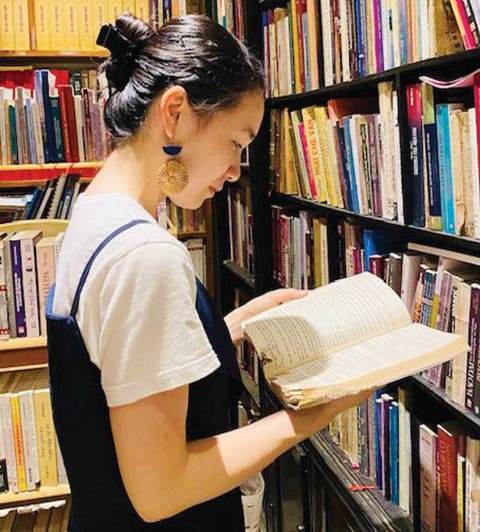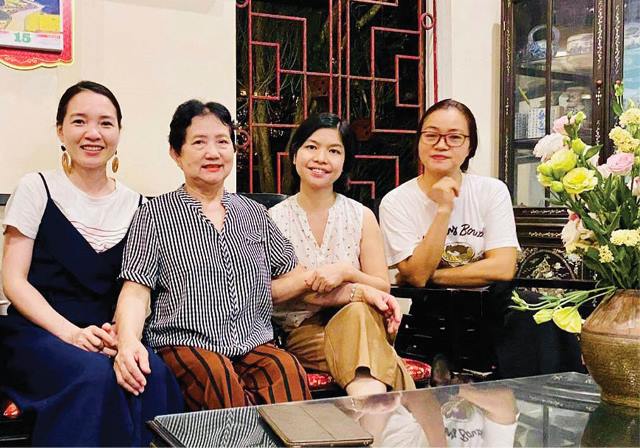I remember my trip to Hue during the pandemic last time. Despite the whimsicality and difficulties Hue still presented us unexpected, gentle, and exciting slices of life.

Enjoying the dessert at Y Thao Garden House
In quietness
Hue on the last days of the summer did not have the scenery of "a rainy afternoon in the imperial capital,” but the scorching sun. Because of the COVID-19 pandemic, the Hue Riverside resort by the Perfume river was almost deserted except for just a few groups of clients.
The resort took advantage of the pandemic to sterilize the thanh tra grapefruit trees by sprinkling lime around them. The pretty swimming pool was closed for repair too.
The COVID-19 pandemic brought about rare and strange moments. The whole resort was like a fairyland. I woke up to birds chirping. The Perfume river was flowing gently. From time to time a dragon boat was passing by.
Never had I been so close to the Perfume river like that. As recorded in historical documents, “the deep wide poetic Perfume river (Linh Giang) got its water from the two streams of Kim Tra and Dan Dien. At the water source was the Minh Uy temple. The Hoa Chau building stood at the estuary. Buildings faced one another on both sides. Good land attracted lots of people. Markets were full of goods…”
That was what in the book. How about reality? Dang Thuy, a journalist of Hanoi Man Newspaper, our two businessman friends, and I borrowed 4 colorful bicycles, one of which had a broken brake while another made loud sounds. Outside the resort were the village, the market, gardens, and many vestiges of the once-imperial capital.
It was said that the Thuy Bieu ancient village was the combination of the two ancient villages of Thuy Bieu and Luong Quan. Here and there we saw a board with the word “Homestay” on it. It was the sign of community-based tourism.
At the village market, we saw an old woman with a Hue conical hat on, lighting a tube-shaped cigarette and smoke leisurely. She said she had grown the tobacco herself. My friend Nguyen Hoai Nam, a literature critic, after hearing the story, told me that tobacco was so strong that it could make people fall reeling.
The village market sold local products that were both familiar and strange. Bananas, vegetables, and eggplants were displayed on banana leaves. In Hue there was a kind of melon - cassaba melon, which was eaten with herbs and fermented fish. The seller at the market was like a tour guide as she showed us how to eat cassaba melon.
Cycling into the alleys which seemed endless, now and then we came across a village gate with the words "Granted by Emperor Minh Mang…” and garden after garden with people hidden among trees. In the end, we had to go back, bringing with us a very different impression about Hue from our previous visits.
Community-based tourism and internal tourism were becoming main trends in these difficult times for the whole country including Hue. One interesting thing which I had never seen before was the hotel in Hue presented us with vegetables.
At Phu Bai airport, I saw many people bring back a lot of things, but no one carried a pumpkin as we did. “Is this fruit strange to you?” Some people asked out of curiosity. I nodded and said: “Yes! Pumpkin grown on Hue land. We have to bring it back to the capital city." They smiled brightly in doubt.
Frankly speaking, due to the pandemic, we did not have many choices for Hue foods. The hotel could not serve much food due to the small number of clients. But we were compensated by the Thuy Bieu village.
And to seek the culinary story on the days of the epidemic, we went to another place.
Y Thao Garden House at night
Y Thao Garden House, a famous restaurant which had often served hundreds of people a day, was then very quiet. Though we had booked the table before, we were taken aback when we arrived there. This time two years ago, the restaurant had been full of diners, greeting one another in different languages. The owner of the restaurant was the former director of the provincial Department of Culture and Sports, and his wife used to be the secretary of Song Huong Magazine. They had been always in a hurry before.

Do Mai was reading books about craft villages in Hue at the family library at Y Thao Garden House
Now, there was just us in the entire Y Thao garden, which was thousands of square meters in area. At night, insects sounded like a concert in the memory.
We fell into the night and the stories of her life, from the times when she had done different jobs to earn her living and to accumulate for the family to how she had kept Hue typical recipes. She recited her husband’s poetry with lots of passion and emotion.
Perhaps rarely were there a restaurant and a meal which were so profound. Both the diners and the owners talked like they were soulmates. It was as if they gave their whole long lives to us. Hue was always sweet even in hard times.
Accompanying us was Do Mai, a lecturer of Japanese with a master degree. This 1989-born girl traveled to Hue as the executive director of Rinaya, a Japanese brand of crafts made of recycled paper.

With Truong Thi Cuc at Y Thao Garden House (photo taken before the pandemic)
She wanted to go to the Bao La bamboo and rattan craft village in Quang Dien District to order their products to export to the Japanese market. Mai presented the female owner of the Y Thao garden a bag made of recycled paper from Japan. In return, she gave us her memoir book "People of the Past.” The male owner found us a book about old craft villages in Hue, but unfortunately it was badly damaged by termites. He then gave us the author’s phone number so that we would be able to find another copy of the book.
Rare talks about impressions and understanding of Thuan Hoa
Today, from afar, I suddenly think about Hue. I wish my old friends and the people of this gentle land beyond description peaceful days so that they can continue to go forward.
Story and photos: Ha An